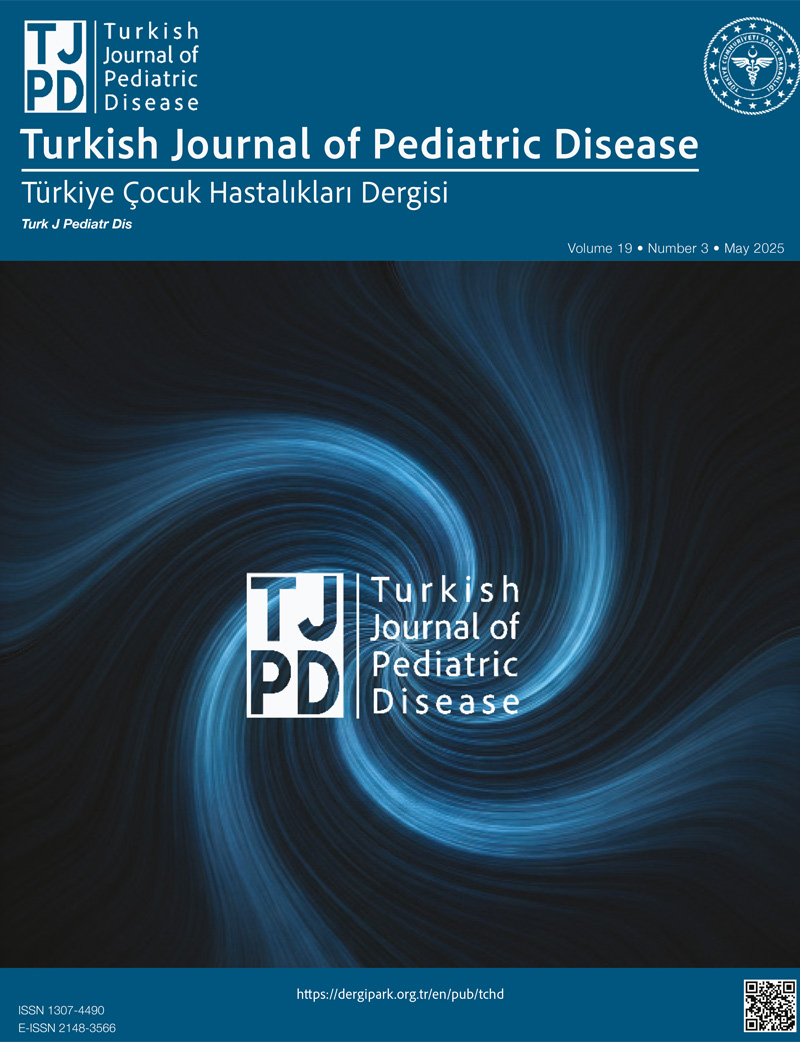Abstract
Objective: Tobacco smoke is a pervasive environmental hazard, particularly detrimental to the developing respiratory systems of infants. Exposure to environmental tobacco smoke (ETS) has been consistently implicated in the etiology of a spectrum of lower respiratory tract infections (LRTIs), which are a leading cause of morbidity in children under two years of age. The pathophysiological impact of ETS extends beyond exposure; it actively exacerbates the severity of respiratory conditions, often resulting in increased hospital admissions and prolonged medical care for the youngest and most vulnerable.
This study aimed to explore the relationship between exposure to ETS and the severity of clinical manifestations, laboratory findings, and hospitalization duration in infants with community-acquired LRTIs.
Material and Methods: A cohort of 115 infants aged 1–24 months, hospitalized due to community-acquired LRTIs and without prematurity or chronic diseases, was evaluated. Data on household tobacco use were collected, and infant cotinine levels were measured to assess the impact of ETS on the severity of LRTIs.
Results: Findings revealed that the frequency of urinary cotinine positivity is significantly higher in infants from households with smokers (p=0.001). Among patients with household smoking, the proximity of tobacco consumption to the child did not affect the frequency of cotinine positivity (p=0.501). Notably, the cotinine-positive group had significantly lower oxygen saturation at admission (p=0.038). In the RSV-positive subgroup, this association remained significant (p=0.015), providing stronger evidence that ETS independently exacerbates respiratory distress.
Conclusion: This study demonstrated that tobacco exposure is associated with increased respiratory distress in infants with lower respiratory tract infections. Emphasizing the importance of smoke-free environments during infancy, it also proved the negative effects of not only secondhand smoke but also thirdhand “surface” smoke exposure on infants’ respiratory health.
Keywords: Environmental tobacco smoke pollution, Infant health, Oxygen saturation, Respiratory tract infections, Secondhand smoke
References
- WHO. Pneumonia 2020. Available from: https://www.who.int/news-room/fact-sheets/detail/pneumonia.
- Dybing E, Sanner T. Passive smoking, sudden infant death syndrome (SIDS) and childhood infections. H um Exp Toxicol 1999;18:202-5.
- Kaur J, Upendra S, Barde S. “Inhaling hazards, exhaling insights: a systematic review unveiling the silent health impacts of secondhand smoke pollution on children and adolescents. Int J Environ Health Res 2024;34:4059-73.
- Lee J, Kim HB, Jung HJ, Chung M, Park SE, Lee KH, et al. Protecting our future: environmental hazards and children’s health in the face of environmental threats: a comprehensive overview. Clin Exp Pediatr 2024;67:589-98.
- Johns Hopkins Medicine. The Impact of Thirdhand Smoke on Kids. Available from: https://www.hopkinsmedicine.org/health/wellness-and-prevention/the-impact-of-thirdhand-smoke-on-kids.
- Asharam K, Mitku AAA, Ramsay L, Jeena PM, Naidoo RN. Environmental exposures associated with early childhood recurrent wheezing in the mother and child in the environment birth cohort: a time-to-event study. Thorax 2024;79:953-60.
- Snodgrass AM, Tan PT, Soh SE, Goh A, Shek LP, van Bever HP, et al. Tobacco smoke exposure and respiratory morbidity in young children. Tob Control 2016;25:e75-e82.
- Zheng K, Tang L, Wang X, Chen L, Zhao Y, Chen X. The risk factors for chronic cough in children: A meta-analysis covering five continents. Respir Med 2024;232:107752.
- National Center for Chronic Disease Prevention and Health Promotion Office on Smoking and Health. The health consequences of smoking—50 years of progress: a report of the surgeon general. Atlanta (GA): Centers for Disease Control and Prevention (US); 2014.
- Leung LT, Ho SY, Wang MP, Lam TH. Secondhand Smoke From Multiple Sources, Thirdhand Smoke and Respiratory Symptoms in Hong Kong Adolescents. Nicotine Tob Res 2018;20:192-8.
- Sureda X, Fernandez E, Lopez MJ, Nebot M. Secondhand tobacco smoke exposure in open and semi-open settings: a systematic review. Environ Health Perspect 2013;121:766-73.
- Torun E, Kahraman FU, Goksu AZ, Vahapoglu A, Cakin ZE. Serum catalase, thiol and myeloperoxidase levels in children passively exposed to cigarette smoke. Ital J Pediatr 2019;45:59.
- Florescu A, Ferrence R, Einarson T, Selby P, Soldin O, Koren G. Methods for quantification of exposure to cigarette smoking and environmental tobacco smoke: focus on developmental toxicology. TTher Drug Monit 2009;31:14-30.
- Inci G, Baysal SU, Şişman AR. Exposure to environmental tobacco smoke by healthy children aged below five (Preliminary study). Turk Pediatri Ars 2018;5:37-44.
- Hassanzad M, Khalilzadeh S, Eslampanah Nobari S, Bloursaz M, Sharifi H, Mohajerani SA, et al. Cotinine level is associated with asthma severity in passive smoker children. Iran J Allergy Asthma Immunol 2015;14:67-73.
- Rice JL, Collaco JM, Tracy MC, Sheils CA, Rhein LM, Popova AP, et al. Parental Report of Indoor Air Pollution Is Associated with Respiratory Morbidities in Bronchopulmonary Dysplasia. J Pediatr 2024;275:114241.
- Vevon B, Temples HS. Secondhand Smoke Exposure in Pediatric Patients: What Is the Nurse Practitioner’s Role? J Pediatr Health Care 2024;38:936-42.
- Maedel C, Kainz K, Frischer T, Reinweber M, Zacharasiewicz A. Increased severity of respiratory syncytial virus airway infection due to passive smoke exposure. Pediatr Pulmonol 2018;53:1299-306.
- Jing W, Wang W, Liu Q. Passive smoking induces pediatric asthma by affecting the balance of Treg/Th17 cells. Pediatr Res 2019;85:469-76.
- Blanco-Ferreiro A, Teijeiro A, Varela-Lema L, Rey-Brandariz J, Candal-Pedreira C, Martin-Gisbert L, et al. Assessment of exposure to secondhand tobacco smoke in Spain: A scoping review. Tob Induc Dis 2024;22. doi: 10.18332/tid/192118. eCollection 2024.
Copyright and license
Copyright © 2025 The Author(s). This is an open access article distributed under the Creative Commons Attribution License (CC BY), which permits unrestricted use, distribution, and reproduction in any medium or format, provided the original work is properly cited.






